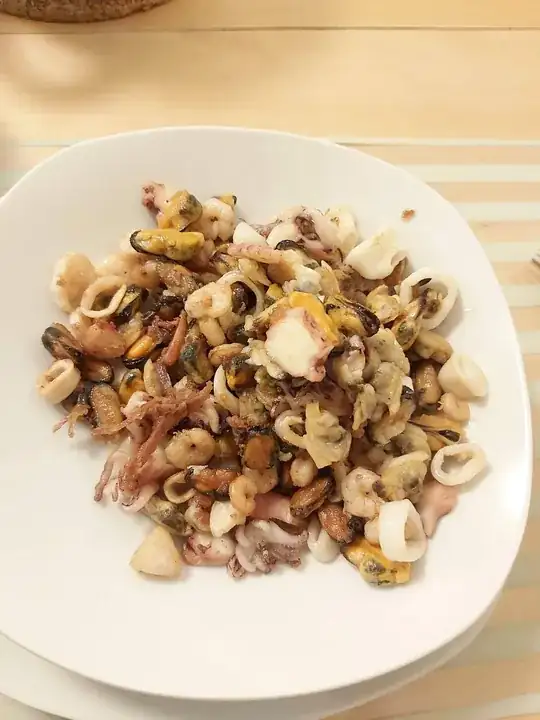You say
In the advertisements the chefs just swirl the mussels, shrimps, and octopus pieces around and produce some tasty browned pieces
That's like saying "When I watch Bob Ross, he just puts paint on the brush, then moves the brush on the canvas, and a landscape emerges. I tried it and no landscape came out."
What you are missing is not theoretical knowledge, but a skill. You are doing the proper steps of the process, in the proper order, but what you cannot do as a novice is to control the relevant process variables, in this case heat transfer. To become like those chefs, there is nothing you need to understand. Rather, you need to invest a few hundred to a few thousand hours of deliberate practice until you start doing it properly. The unconscious part of your brain has to learn to recognize when the food is being heated properly, and when it is the time to intervene.
The process can be shortened if you can be an "apprentice", in the sense of watching somebody do it, then trying it yourself and having them correct you as needed. If not, you can still learn it, you just have to be more concentrated and accept more errors in the trial-and-error process. Until then, you have to eat the food as it comes out of your pan, even if it isn't perfectly cross and browned - and I would declare the food from your picture perfectly edible.
To set yourself up for success, you should probably not only lower your goals (or lengthen the time horizon until you can cook like a chef) but also give yourself an easier task. Frozen seafood is quite tricky. Seafood in general is fickle, and frozen makes it worse. I would suggest to start with something easy, like freshly cut vegetables, and take it from there. Don't choose something that's too watery (such as mushrooms), or something that won't cook through (such as potatoes). Also it would help if you have a good pan (althogh the tricky part is, as a novice you can't tell when a pan is working well and when it isn't, and you maybe don't have the nerve to care for something like homeseasoned cast iron). It's not that you can't cook in a bad pan, but a good one gives you more leeway.
What also makes your situation different from the chefs is your range and the swirls. As for the range, if you have a gas oven, you are lucky - but it is still less powerful than a professional one. Electricity, including induction, restricts you, and you have to learn to work around that, which makes the learning more complex. As for the swirling, my suggestion is to not learn them at all. They are good if you want to show off in front of a TV camera, or if you are in a hectic professional kitchen for 14-hour shifts, and don't have the time to grab a spatula. At home, it is easier to just stir with an implement and avoid the complexity of learning a motoric subskill at the same time you are learning the main skill.
When you are set to go, all you need is patience and attention. Attention, to make sure you notice what is going on in your pan and how the food is changing. Patience, to repeat it hundreds of times (and also to not intervene when not needed! I knew somebody who was so jittery when around a pan, he had to stir the whole time - his food was always terrible). When you are done learning, you will be able to take a look at a pan and know whether at this moment, the food in it needs stirring, or more heat, or less heat, or more oil, or maybe something else (when you go to more complicated techniques). But it is not something that you will be able to describe in words to another person - it is implicit knowledge you have to train in yourself.

